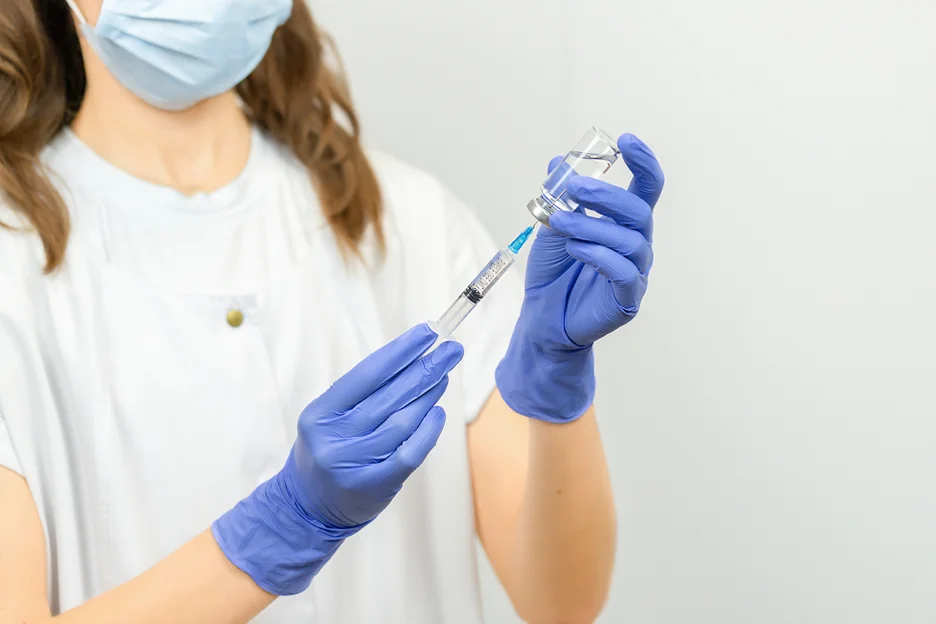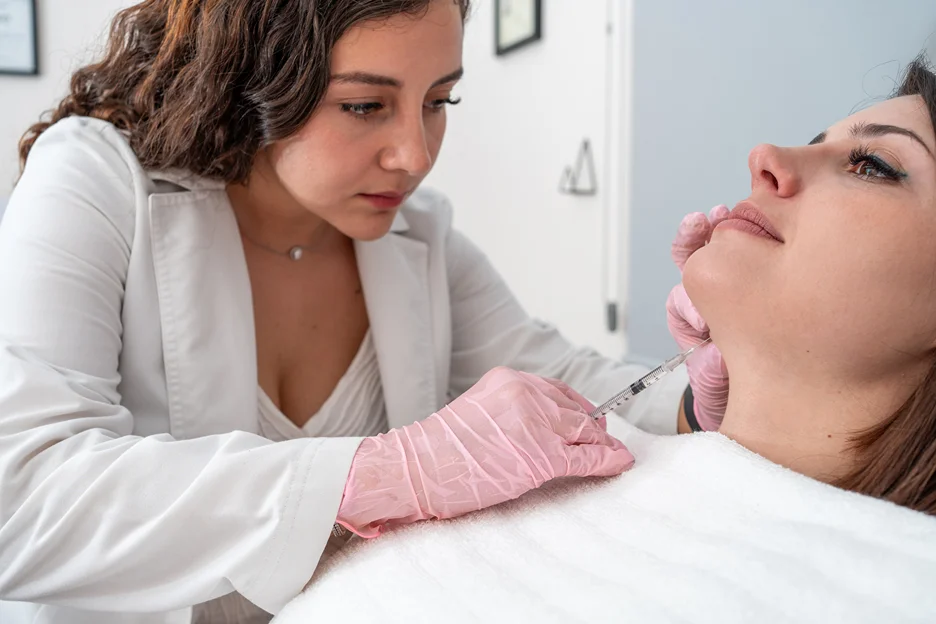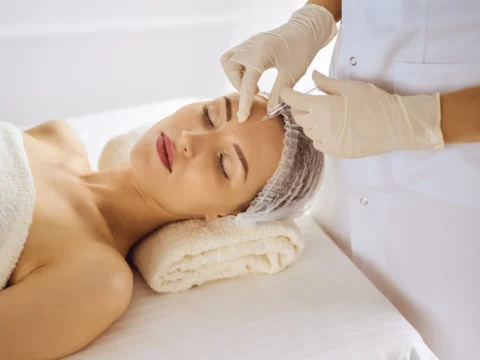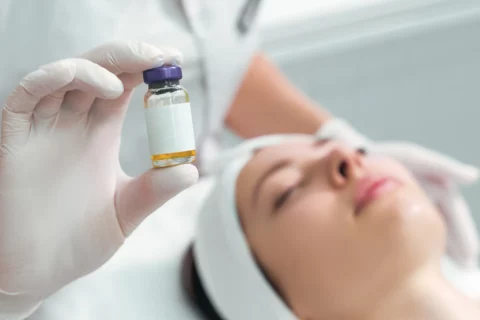Exosomes are nanoscale vesicles used in aesthetic medicine to deliver growth factors and proteins that stimulate cell regeneration, improve skin elasticity, and potentially promote hair growth.
Understanding Exosomes: The Microscopic Powerhouses of Cellular Communication
What Exactly Are Exosomes?
Exosomes are nanoscale extracellular vesicles, which means they are incredibly tiny sacs released by cells. Their natural role in the body is to act as messengers, facilitating communication between cells by carrying important signals and molecules. Key characteristics of exosomes include their very small size (typically 30-150 nanometers), their natural origin from cells, and their rich cargo, which can include proteins and genetic material.
The Science: How Do Exosomes Work Their Magic in Aesthetics?
In aesthetic medicine, exosomes exert their effects by delivering their bioactive cargo-which includes proteins, growth factors (like FGF and TGF-β), and microRNA-to target cells. This delivery can stimulate the recipient cells, encouraging natural regeneration and repair processes.
One of the key outcomes of this stimulation is the promotion of collagen and elastin synthesis, which are vital proteins for maintaining the skin’s structure, firmness, and elasticity. Exosomes also possess anti-inflammatory properties, helping to modulate inflammation, which can support healing and contribute to a rejuvenated appearance.
These effects are mediated through various cellular signaling pathways, such as the MAPK/ERK pathway, which is involved in promoting cell proliferation and migration, though a deep dive into these pathways is complex.
Sources of Aesthetic Exosomes: Where Do They Come From?
Exosomes used in aesthetic treatments are typically derived from a few key sources. Mesenchymal Stem Cells (MSCs) are a common source; these MSCs themselves are often obtained from adipose tissue (fat) or bone marrow.
An emerging area of research is plant-derived exosomes, which are also being explored for their potential applications. The process of obtaining exosomes involves isolating them from their source cells and then purifying them through laboratory techniques like filtration and centrifugation to ensure they are ready and safe for therapeutic use.
Exosome Therapy in Aesthetic Medicine: Applications and Key Benefits

Exosome therapy is gaining attention for its potential in various aesthetic applications, from revitalizing skin to promoting hair growth.
Skin Rejuvenation: Targeting Wrinkles, Tone, and Texture
Exosomes are increasingly used for skin rejuvenation due to their ability to improve skin elasticity and firmness. They can help reduce the appearance of fine lines and wrinkles and enhance overall skin tone and radiance. There is also potential for exosomes to address pigmentation issues and age spots, contributing to a more even complexion.
For instance, some research indicates improvements in skin texture; one study noted that adipose-derived stem cell exosomes (ADSC-exos) combined with microneedling led to a 28% improvement in Global Aesthetic Improvement Scale (GAIS) scores, compared to 14% for microneedling alone.
Accelerating Wound Healing and Minimizing Scars
Exosomes play a role in promoting the body’s natural healing processes. This characteristic makes them a subject of interest for accelerating wound healing and potentially reducing scar formation after procedures or injuries.
Hair Restoration: A Novel Approach to Hair Loss
For individuals experiencing hair loss, exosome therapy offers a novel approach. It is believed to work by stimulating hair follicles, which can promote hair growth and potentially lead to an increase in hair density and thickness. This application directly addresses the common search query “Exosomes for hair loss.”
The Overall Advantages: Why Consider Exosome Therapy?
Several factors contribute to the growing interest in exosome therapy:
- Minimally invasive or non-invasive: Application methods are often topical or involve minimal invasion.
- Natural regeneration: It leverages the body’s own regenerative capabilities.
- Good tissue penetration: Due to their small particle size, exosomes can penetrate tissues effectively.
- Generally well-tolerated: They tend to have low immunogenicity, meaning they are less likely to cause an adverse immune response.
Navigating Exosome Therapy: Your Step-by-Step Guide to the Treatment Experience

Understanding what to expect before, during, and after exosome therapy can help you make a more informed decision.
The Initial Consultation: Is Exosome Therapy Right for You?
The first and most crucial step is a thorough consultation with a qualified medical professional. During this meeting, you’ll discuss your aesthetic goals, your medical history, and whether exosome therapy is a suitable option for you. Good candidates are typically individuals looking for rejuvenation and repair who understand the current status of this evolving therapy.
The Exosome Treatment Procedure: What to Expect
Exosomes can be administered in a few ways. Common methods include topical application, often after a procedure like microneedling that creates micro-channels in the skin for better absorption, or via direct, gentle injections into the target area. A typical session’s duration can vary depending on the area being treated. As for sensation, your provider will discuss what to expect, aiming to manage expectations and ensure comfort; topical numbing agents may be used if injections are involved.
Post-Treatment Care and Expected Recovery
Your provider will give you specific aftercare instructions. Generally, downtime is minimal, with many people resuming normal activities quickly. Visible results can vary; some individuals may notice improvements relatively soon, while for others, changes may be more gradual as the exosomes stimulate cellular processes. Results can last for several months, and in some cases, even years.
How Many Sessions Are Needed and How Long Do Results Last?
The number of exosome treatment sessions required varies depending on the individual, the condition being treated, and the desired outcome. Often, fewer sessions (e.g., 1-2) may be suggested compared to treatments like PRP, which might require 3-6 sessions. The longevity of results can also differ, potentially lasting for months or even years, with maintenance treatments being an option to prolong the effects.
Safety, Risks, and the Regulatory Maze: A Crucial Overview for Consumers
While exosome therapy shows promise, it’s vital to understand the safety considerations and the current regulatory landscape.
Potential Side Effects and Safety Considerations of Exosome Therapy
Like any medical procedure, exosome therapy has potential side effects.
- Common and mild: These are often temporary and may include redness, mild swelling, or tenderness at the application or injection site.
- Less common risks: Though less frequent, there are potential risks such as infection if the procedure is not performed with sterile techniques or if the product is contaminated. Allergic reactions, though rare, are also a possibility. Unwanted inflammation or a loss of effectiveness due to improper product handling or storage are other concerns.
- Importance of quality and technique: The use of sterile techniques by the provider and high-quality, properly sourced exosome products is paramount to minimize these risks.
The Big Question: Is Exosome Therapy FDA Approved for Aesthetic Use?
This is a critical point for consumers. As of early 2025, exosome products are generally not FDA-approved as drugs for widespread cosmetic treatment in the United States. Some exosome products might be used under investigational new drug (IND) pathways for clinical trials, or marketed as topicals that do not make disease-treatment claims that would classify them as drugs.
The FDA has issued consumer alerts regarding unapproved regenerative medicine products, including some exosome products, emphasizing that they have not been evaluated by the FDA for safety or efficacy.
It’s important to distinguish between terms like “FDA-approved” (which signifies a rigorous review and approval process for a specific use) and marketing terms such as “FDA-compliant” or “lab-registered,” which do not confer FDA approval of the product itself for therapeutic use.
The regulatory landscape for exosomes is complex and evolving, and this matters for consumer protection and ensuring treatments are both safe and effective.
Ensuring Your Safety: How to Choose a Qualified Provider and Reputable Clinic
Given the regulatory status and potential risks, choosing a qualified provider is essential.
- Practitioner credentials: Look for medical professionals with appropriate qualifications, training, and specific experience with exosome therapies.
- Questions to ask: Don’t hesitate to ask your provider about their clinic’s sterilization practices, the source and manufacturing standards of the exosomes they use, and their experience with the specific treatment you are considering.
- Red flags: Be wary of clinics making unverified claims that sound too good to be true, a lack of transparency about the products used, or unusually low prices that might compromise quality or safety.
Exosome Therapy vs. Other Popular Aesthetic Treatments: A Consumer-Friendly Comparison
Understanding how exosomes compare to other treatments can help you weigh your options.
Exosomes vs. Platelet-Rich Plasma (PRP)
PRP therapy involves using a concentration of a patient’s own blood platelets, whereas exosome therapy uses lab-derived acellular messengers. Exosomes are thought to potentially contain a higher and more consistent concentration of growth factors and may possess stronger anti-inflammatory properties compared to PRP, the quality of which can vary based on the individual’s health and age.
PRP requires a blood draw from the patient and on-site preparation, while exosomes are typically prepared in a lab and ready for use. Fewer exosome treatments may be needed compared to PRP to achieve desired results.
| Feature | Exosome Therapy | Platelet-Rich Plasma (PRP) |
| Mechanism | Acellular messengers, deliver growth factors | Uses patient’s own platelets, growth factors |
| Source | Lab-derived (e.g., from stem cells) | Patient’s own blood |
| Preparation | Pre-prepared in lab | Requires on-site blood draw & centrifugation |
| Concentration | Potentially higher concentration of growth factors | Variable based on patient |
| Inflammation | Anti-inflammatory properties | May not have same anti-inflammatory effect |
| Sessions | Typically 1-2 | Typically 3-6 |
| Invasiveness | Topical or injection, no blood draw | Injection, requires blood draw |
| Potential Efficacy | Potentially more consistent and potent effects | Efficacy can vary with patient factors |
| Downtime | Minimal | Minimal, potential for bruising/swelling |
| Typical Cost Range | Generally higher per session | Can be lower per session, but more sessions needed |
| Pros | No blood draw, consistent product, potent signals | Uses patient’s own biological material |
| Cons | Higher cost, product sourcing transparency crucial | Blood draw needed, variable growth factor levels |
Exosomes vs. Stem Cell Therapy
A key distinction is that exosomes are cell-free derivatives; they are not living cells themselves, unlike stem cell therapy. Exosomes act as messengers carrying instructions from cells like stem cells, potentially offering some of the regenerative signaling benefits without the administration of live cells. This may reduce certain risks associated with live cell therapies, such as rejection or unintended cell differentiation.
Stem cells have the ability to differentiate into new cell types, a property exosomes do not possess. The effects of exosome therapy might also be observed more quickly than those from stem cell therapies. Regulatory considerations also differ significantly between these two types of therapies.
| Feature | Exosome Therapy | Stem Cell Therapy |
| Nature | Acellular (particles from stem cells) | Living cells |
| Action | Signal cells, deliver cargo (no cell transformation) | Differentiate into new cells, regenerate tissue |
| Risks | Generally fewer (not living cells) | Potential rejection (if donor), infection risk, uncontrolled growth |
| Speed | Effects often quicker | Results may take weeks/months |
| Source | Derived from stem cells (e.g., MSCs) | Patient (autologous) or donor (allogeneic) |
| Regulatory Status (US) | Generally not FDA-approved for cosmetic use | Highly regulated, mostly investigational for aesthetics |
| Mechanism | Intercellular communication via cargo delivery | Direct cell replacement and paracrine signaling |
| Downtime | Minimal | Variable, can be more extensive |
| Pros | Lower immunogenicity risk, no live cells | Potential for direct tissue regeneration by cells |
| Cons | Indirect action (signaling) | More invasive, higher potential risks, complex regulation |
Exosomes vs. Growth Factors & Peptides (Topical/Serums)
Topical growth factor and peptide serums are common in skincare, but exosome therapy differs in delivery and complexity. Exosomes deliver a diverse array of hundreds of growth factors and signaling molecules directly into the skin (often via microneedling or injection), potentially offering deeper penetration and more complex cellular signaling than topical applications alone.
While peptides are smaller protein fragments that can also signal cells, their effectiveness and potential for skin reactions can vary. Exosome formulations might offer a broader and more coordinated regenerative stimulus in some models.
Exosomes vs. Injectables like Fillers & Botox
Exosomes, fillers, and Botox serve fundamentally different purposes. Exosome therapy aims for cellular-level regeneration, improving overall skin quality, health, natural collagen, and elastin production over time. Dermal fillers are designed to add immediate volume to specific areas, correcting wrinkles or enhancing contours.
Botox works by temporarily relaxing muscles to reduce the appearance of dynamic wrinkles caused by facial expressions. Therefore, exosomes focus on long-term skin quality improvement, while fillers and Botox provide more temporary, targeted solutions for specific concerns like volume loss or dynamic lines.
An advantage of exosomes is that they do not carry the risk of overfilling or product migration sometimes seen with fillers. These treatments can sometimes be complementary; for instance, exosomes might be used post-procedure to enhance healing after other aesthetic interventions.
| Feature | Exosome Therapy | Dermal Fillers | Botox (Neurotoxin) |
| Action | Stimulates natural collagen, cell repair | Adds immediate volume | Temporarily relaxes muscles |
| Primary Use | Skin quality, texture, elasticity, fine lines | Volume loss, deep wrinkles, contouring | Dynamic wrinkles (e.g., crow’s feet, frown lines) |
| Longevity | Gradual, long-term improvement | Temporary (6-18 months typically) | Temporary (3-6 months typically) |
| Results | Natural rejuvenation | Instant volume enhancement | Wrinkle reduction by muscle relaxation |
| Skin Quality | Improves skin health | Does not improve skin quality | Does not improve skin quality |
| Risks | Low (natural regeneration), site reactions | Lumpiness, migration, overfilling, bruising, occlusion | Asymmetry, drooping, frozen expression, bruising |
| Mechanism | Cellular signaling, regenerative cargo delivery | Physical plumping with gel-like substance | Blocks nerve signals to muscles |
| Underlying Issue Addressed | Cellular aging, reduced regenerative capacity | Volume depletion, static wrinkles | Muscle overactivity causing wrinkles |
The Science & Research: Understanding the Evidence and Future Outlook

The scientific community is actively researching exosomes, but it’s important to distinguish established findings from emerging possibilities.
What Clinical Studies and Research Say About Exosome Efficacy
Peer-reviewed studies and pre-clinical research have shown promise for exosomes in various dermatological and aesthetic applications.
- Pre-clinical models (e.g., laboratory or animal studies) have indicated potential for exosomes in wound healing, scar modulation, treating alopecia (hair loss), and skin rejuvenation.
- Clinical trials in humans have begun to explore these applications, particularly focusing on skin rejuvenation. For example, some studies using topical exosomes after procedures like laser or microneedling have reported improvements in wrinkles, skin texture, pore size, and skin evenness. Research by Park et al. (2021) found that adipose-derived stem cell exosomes (ADSC-exos) combined with microneedling improved GAIS scores, as well as parameters like wrinkles, elasticity, hydration, and pigmentation, more than microneedling alone.
- It’s crucial to note that while many studies show positive outcomes, the field is still developing. More large-scale, robust clinical trials are needed to definitively establish efficacy, optimal dosages, and long-term effects for various conditions. Some trials may also yield neutral or less conclusive results; for instance, one study mentioned in a review showed no significant difference in healing time for biopsy lesions when treated with exosomes compared to a control.
Hype vs. Reality: Setting Realistic Expectations for Exosome Therapy
There’s considerable excitement-and sometimes hype-surrounding exosome therapy. While the science is promising, it’s important for consumers to have realistic expectations. Exosome therapy is not a “miracle cure,” and results can vary significantly from person to person based on individual factors, the condition being treated, the specific exosome product used, and the administration protocol. The field is still evolving, and many applications are considered investigational.
Current Challenges and Limitations in the Field of Aesthetic Exosomes
Several challenges exist in the broader adoption and application of exosome therapies. These include:
- Standardization: Establishing consistent standards for exosome isolation, characterization, and quantification is crucial.
- Scaling production and cost: Manufacturing high-quality exosomes on a large scale can be complex and costly, which can impact treatment prices.
- Purity and consistency: Ensuring the purity of exosome preparations and consistency between batches is vital for predictable and safe outcomes.
- Heterogeneity and preservation: Exosomes themselves can be diverse, and maintaining their stability and biological activity during storage and handling is also a challenge.
These challenges can influence the cost of treatments and potentially lead to variability in the products and outcomes consumers experience.
The Future of Exosomes in Beauty and Regenerative Aesthetics
Despite the challenges, the future of exosomes in aesthetic and regenerative medicine looks bright. Ongoing research is exploring new applications and refining existing ones. Innovations in exosome engineering, such as developing ways to load exosomes with specific therapeutic cargoes (personalized exosome payloads), could lead to more targeted and effective treatments in the future. As research progresses, we can expect a deeper understanding of how to best harness the regenerative power of these tiny cellular messengers.
Frequently Asked Questions (FAQ) about Exosome Therapy
Here are answers to some common questions about exosome therapy.
What are the specific results I can expect from exosome therapy for wrinkles, age spots, or skin elasticity?
Based on current research and clinical observations, exosome therapy may lead to improvements in skin texture and firmness, a reduction in the appearance of fine lines and wrinkles, and enhanced skin radiance and evenness. Some studies also suggest potential benefits for reducing pigmentation issues like age spots. However, it’s important to remember that results can vary significantly depending on the individual, the specific product used, and the treatment protocol. The “Science & Research” section provides more context on clinical findings.
Are there any long-term side effects associated with exosome therapy?
Known short-term side effects are generally mild and temporary, such as redness or swelling at the application site. As exosome therapy is a relatively new and evolving field in aesthetics, comprehensive long-term safety data is still being gathered. The majority of current understanding is based on shorter-term studies and the biological nature of exosomes, which are natural cellular products. Choosing high-quality exosome sources and having treatment administered by qualified, experienced providers are key factors in minimizing potential risks.
How much does a typical exosome treatment session cost?
The cost of exosome therapy can vary widely. Factors influencing the price include geographic location, the reputation and expertise of the clinic and provider, the extent of the area being treated, and the source and type of exosome product used. Generally, exosome therapy is considered a premium treatment, and its cost may be higher than some other aesthetic procedures. It’s best to consult with clinics directly to get specific pricing information.
How are cosmetic exosomes sourced and manufactured (in simple terms)?
Cosmetic exosomes are typically derived from sources like Mesenchymal Stem Cells (MSCs), which can be obtained from human tissues such as adipose tissue (fat) or bone marrow, and sometimes from umbilical cord tissue. There is also emerging research into plant-derived exosomes. Once the source cells are cultured in a lab, the exosomes they release are harvested from the culture medium. These collected exosomes then undergo purification processes, such as filtration and centrifugation, to isolate them and ensure they are free of cellular debris and other unwanted components before being prepared for therapeutic use.
Is exosome therapy better than stem cell therapy for anti-aging?
It’s not accurate to say one is definitively “better” than the other for everyone, as they are different types of therapies with distinct mechanisms and considerations. Exosomes are cell-free products-they are the messengers derived from cells like stem cells, but they are not living cells themselves. Stem cell therapy involves the administration of live cells. Potential advantages often cited for exosomes include a lower risk of immunogenicity (immune rejection) because they are not whole cells, and they don’t carry the risks associated with live cell transplantation, such as uncontrolled cell growth. Some also suggest that the effects of exosomes might be seen more quickly.
However, stem cells have the unique ability to differentiate into various cell types, which is a different mechanism of action. The “better” choice depends on an individual’s specific anti-aging goals, their overall health, the specific condition being addressed, regulatory considerations, and their comfort level with each type of therapy. A detailed discussion with a knowledgeable physician is essential to determine the most appropriate approach.






